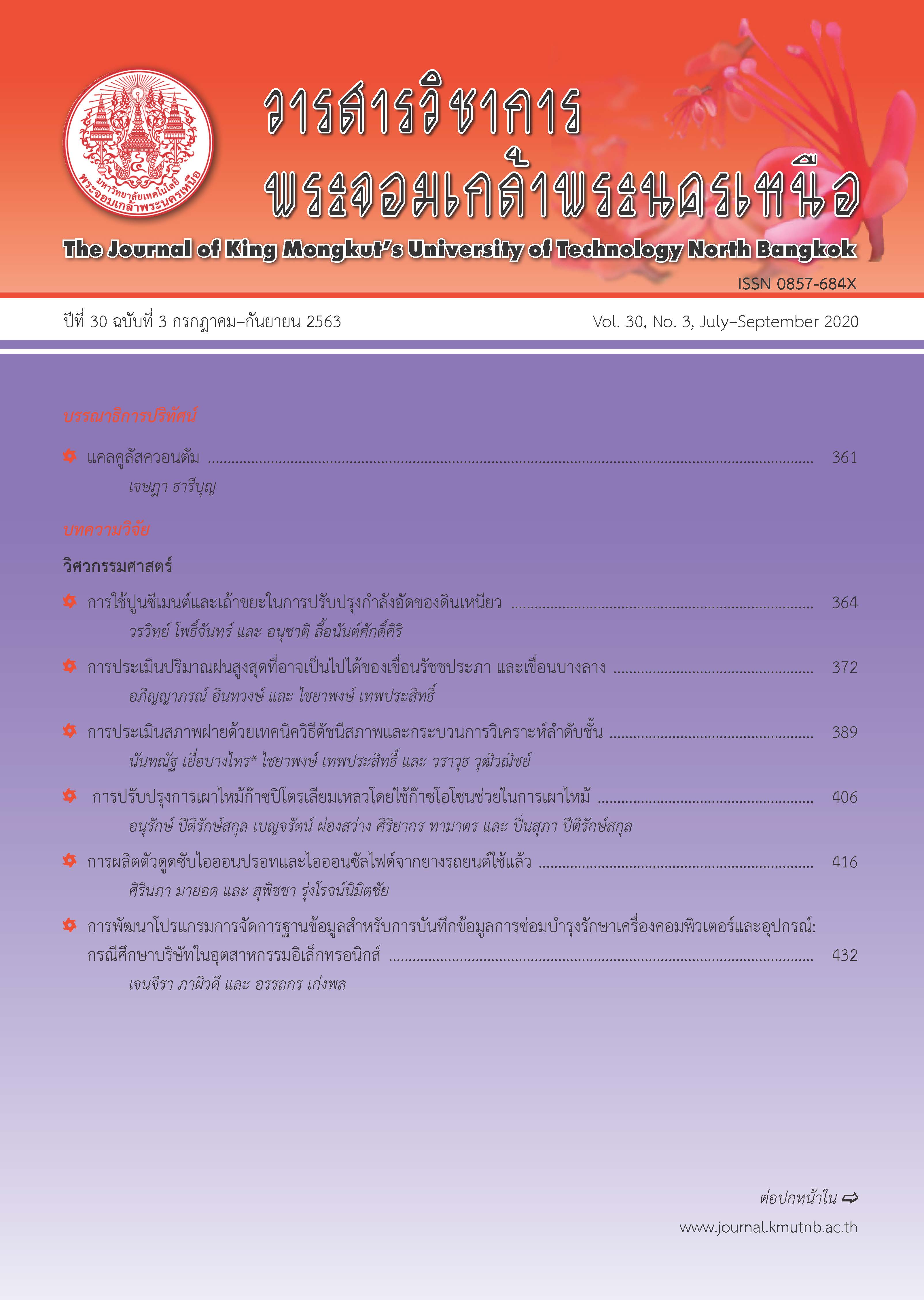Using of Cement and Bottom Ash to Strength Improvement of Clay
Main Article Content
Abstract
This present paper investigates the influence of equivalent control, (moisture content, cement content, the amount of bottom ash from Khon Kaen municipal solid waste ash content, and curing time) on strength development in clay admixed with cement and bottom ash. This paper reveals a possibility of replacing cement with bottom ash to improve strength of clay. It is found that strength increases with bottom ash content. The role of bottom ash is to disperse the clay-cement clusters into smaller clusters, which increases the reactive surface, and hence strength. An addition of 20% bottom ash in the cement gives the highest strength for all combination of water content and cement content. Based on the claywater/cement ratio and the parameter equivalent cement content, the strength prediction equation for the clay admixed cement is introduced. It is found that for all curing times test, bottom ash content is equal to 0.80 cement content for all combinations of water content, cement content and bottom ash content.
Article Details
The articles published are the opinion of the author only. The author is responsible for any legal consequences. That may arise from that article.
References
[2] P. Sancharoen, “Utilization of municipal solid waste incinerator fly ash as a partial cement replacement on concrete,” M.S. thesis, Departmental Program in Environmental Management Graduate School, Chulalongkorn University, Bangkok, 2003 (in Thai).
[3] N. Chusilp, S. Ngarmkham, and M. Anusiri “Effects of municipal waste ash on the durability and mechanical properties of concrete,” in Proceedings of the 22nd National Convention on Civil Engineering, Nakhon Ratchasima, Thailand, vol. 2, pp. 91–96, 2017 (in Thai).
[4] A. Suddeepong, R. Rachan, and S. Horpibulsuk, “Equivalent cement content-A new parameter for analysis of strength delelopment in blended cement admixed clay,” presented at the 14th National Convention on Civil Engineering. Nakhon Ratchasima, Thailand, 2009 (in Thai).
[5] W. Phojan and S. Horpibulsuk, “Analysis of strength development blended cement admixed saline soil,” KKU Enguneering Journal, vol. 38, no. 1, pp. 27–34, 2011 (in Thai).
[6] S. Horpibulsuk, R. Racha, and Y. Raksachon, “Role of fly ash on strength and microstructure development in blended cement stabilized silty clay,” Soils and Foundations, vol. 49, no. 1, pp. 85–98, 2009.
[7] S. Horpibulsuk, N. Miura, and T. S. Nagaraj, “Assessment of strength development in cement-admixed high water content clays with Abrams’ law as a basis,” Geotechnique, vol. 53, no. 4, pp. 439–444, 2003.
[8] S. Horpibulsuk and N. Miura, “A new approach for studying behavior of cement stabilized clays,” in Proceedings of the 15th International Conference on Soil Mechanics and Geotechnical Engineering, Istanbul, Turkey, vol. 3, pp. 1759–1762, 2001.
[9] N. Miura, S. Horpibulsuk, and T. S. Nagaraj, “Engineering behavior of cement stabilized clay at high water content,” Soil and Foundation, vol. 41, no. 5, pp. 33–45, 2001.

